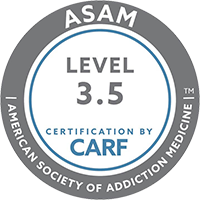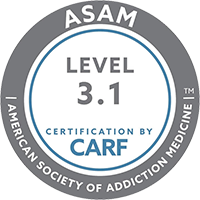Let me debunk a myth of addiction. You’ve probably heard that an addict must “want to get clean”, or that they need to reach some sort of “bottom,” in order to be successful at treatment. This is not true. There have been studies that show high-pressure treatment, court orders, jail rehabs, and motivation from child protective services, work, in some instances, better than other avenues. No addict fully wants to stop — that’s the nature of addiction — they cannot make rational choices.
The idea of a “bottom” is trivial; many different situations can motivate change, and provide incentives for treatment. The bottom is whenever a person stops digging. The idea behind the high-stress treatment is to get the body there, and the mind will hopefully follow. Meaning, get the person into treatment, and hopefully, they begin to want it and realize they have reached their bottom when the fog starts to lift in their mind. Still not fully convinced? How am I so sure? I am sober today because my mother, 7 days before Christmas (2005), on my brother’s birthday, called my parole officer and had me arrested next to the Christmas tree. I didn’t want to stop using and was high the day I was handcuffed. It wasn’t until my mind cleared enough in jail that I started to contemplate the sober life. I can only imagine how hard of a decision that was for her to make. She knew that I had a 5-year sentence that she was sending me back to face. My mom didn’t stop there. She worked with the attorney, and the judge to give me the opportunity to access treatment. After two and a half years in prison, and three court-ordered rehabs (all of which were in succession, and varying lengths, totaling 10 months of treatment), I have now been sober for 8 years. Weren’t you angry with her? Honestly… no. At first, I acted as if I was, and even told her I was, but deep down I knew it was the correct decision.
After I had been in jail for a while and had started treatment, I thanked her, and still do to this day. Her willingness to act very literally saved my life.
If you are reading this, it is highly likely that you’ve had the epidemic of addiction affect you personally in some manner. Substance abuse is ripping through our country, and traumatically, through our families. This sickness leaves parents feeling hopeless, friends desperate, and children powerless. A persistent, seemingly endless, the battle begins with the loved ones, and the person affected by drugs, for the addict to discontinue use and seek treatment. Unfortunately, while the addict is in active addiction, the likelihood of them seeking out treatment on their own is slim.
A 2008 survey that was conducted by the National Survey On Drug Use and Health found that 95% of people who needed treatment reported that they did not need help. This staggering number is all too real to the loved ones.
There is hope. In 2004 Kentucky passed Casey’s Law, which was inspired by the death of Matthew Casey Wethington who died of an overdose on heroin at the age of 23. His parents were denied and even discouraged to intervene because of the myths previously discussed. Casey’s Law allows the involuntary commitment to treatment by a family member or loved one. This law gives loved ones an option, a fighting voice in the matter.
How does it work? You can download a Casey’s Law petition here. Fill it out, and file it with the appropriate county circuit clerk. Click here for a list of circuit clerks by county. You can complete this process yourself, or consult an attorney.
After the petition is filed, the court reviews the allegations in the petition and examines the petitioner (the person who filed) under oath. Then the court determines whether there is probable cause to order the respondent to treatment (the person named in the petition). If there is probable cause, then a hearing date is set for 14 days later. Two qualified health professionals, one of whom must be a doctor, then assess the respondent. If they find the respondent is in need of treatment, then the court will decide the length of treatment the respondent will be ordered to complete, usually between 60 and 360 days. The person who filed the petition is responsible for paying the cost of treatment. There are free treatment centers, and many rehabs have a sliding scale fee schedule to assist varying incomes.
If the respondent does not comply with treatment the judge can hold them in contempt of court and sentence them to jail time, which is more incentive to attend treatment. Casey’s Law is active in Kentucky. Ohio and Indiana have similar laws.
You do have a say. Most of the time, addicted people cannot make the decision for themselves. In my situation, I wasn’t going to stop unless something stopped me. Thank God that something was my mother who loved me enough to have me arrested, as well as advocate for my treatment. If you have any questions, or if your loved one is looking for treatment, Addiction Recovery Care has amazing facilities, professional staff, and has already served thousands of clients from all over the nation. They have many affordable ways to pay, and a staff member is waiting on your call to help you through the process. Don’t wait for your loved ones to stop digging, lovingly take the shovel from them, and give them the opportunity to never dig again.
Jonathan Hughes is a recovering drug addict and has been sober since June 15th, 2006. His addiction led him in and out of prison and rehabs where he had a spiritual experience that would facilitate a lasting change in his life. He personally knows addiction can be defeated and strives to help others believe the same for themselves. Jonathan graduated from Western Kentucky University with a Bachelor of Arts in Sociology and became certified as a non-profit professional. He believes that he survived for one reason — to help the addict that still suffers.





